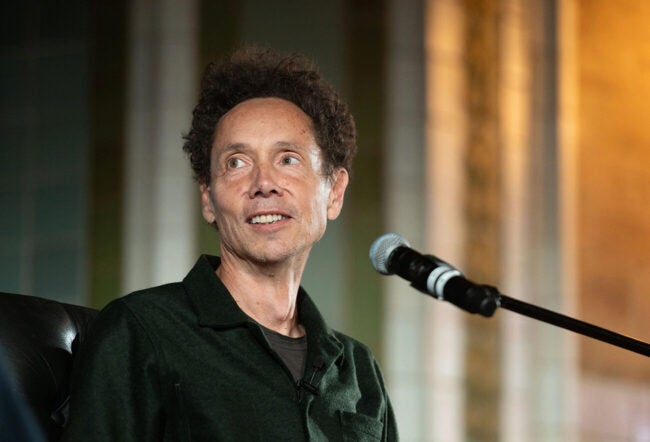For anyone who grew up with Ma Bell as the phone company, it might seem unimaginable that AT&T could be thwarted. And yet, after saying “no” for months as Philadelphia-based Comcast Corp. offered to buy its cable TV operations, AT&T found Comcast going over its head on July 8, in a direct offer to shareholders – one that might well succeed.
The AT&T-Comcast story says much about the ending of old monopolies and the building of new ones. If Comcast, the third-largest cable company in the U.S., with 8.4 million subscribers, takes over AT&T Broadband, the largest cable company, with 16 million subscribers, the result will be the biggest cable company in history, serving more than 22 million customers. (AT&T operations with 2 million subscribers are to be sold.)
Yet most experts expect little serious opposition from regulators, since the deal is not likely to clearly undercut consumers’ interests. It could, however, help change the balance of power between the cable companies and the networks that produce cable programs. Ten years ago the largest seven cable companies controlled 44% of the market; today they have more than 80%.
“The more concentrated the cable industry on a national basis, the more bargaining power it will have with the networks” that produce programming, says
AT&T, of course, lost its monopoly over phone service 17 years ago. Yet it has remained a powerhouse with four major businesses: wireless, such as cell phone service; consumer phone service; business telecommunications service; and cable service, known as broadband. The company has disappointed shareholders, with its stock falling to about $13 in December 2000, from just over $48 in January 1999. Over the same period, Comcast shares rose to about $38 from about $28.
For AT&T, long-distance phone revenues have been shrinking in the face of tough competition. Wireless also has become intensely competitive. And AT&T Broadband, which chairman C. Michael Armstrong had spent $100 billion to assemble, lost $5.4 billion in 2000. The problem: Armstrong paid too much and revenues started running short while the company still needed to upgrade to make its cable systems capable of handling TV, Internet and phone service at the same time, as Armstrong had envisioned.
“There was a real failure by AT&T to pull off its strategy,” says
Comcast is focused on the lucrative cable business and has made many savvy acquisitions under the leadership of founder Ralph J. Roberts and his son Brian (both Wharton graduates). It has been among the most successful companies to offer high-speed Internet access via cable, according to Faulhaber. Its operating margins are far better than AT&T’s. The switch to digital capability was difficult and expensive, but “is largely behind them now,” Faulhaber says.
With digital, a cable company can be an Internet service provider, or ISP, and charge a monthly fee on top of the fee for TV service. Yet the Internet service requires only a small sliver of the cable’s capacity. “The cable companies essentially double their revenues,” Faulhaber says. In the not-to-distant future, Comcast and the handful of other cable giants also will offer more interactive capability in the TV service, with sports fans choosing their vantage point on a game and viewers ordering products they see advertised, Faulhaber says. This, too, offers potential revenues. Moreover, cable companies are also planning to offer phone service. “That promises to be a very good revenue stream,” Faulhaber says.
In a bid to boost shareholder returns, Armstrong last fall announced a plan to break the company into four units, each with its own stock. Investors weren’t impressed, viewing this as a reversal of the original strategy of going all-digital, with phone, TV and Internet data all gushing through AT&Ts cable pipelines. Then Comcast came courting, trying through the late winter and spring to buy the broadband business. Armstrong & Co. refused, insisting shareholders would do better under the spin-off plan.
Early in July, AT&T told the Securities and Exchange Commission it would ask shareholders at the end of the month to approve issue of a Broadband tracking stock. Comcast quickly moved to derail that effort by announcing its purchase offer, for $58 billion in stock and assumed debt.That would be a “firesale” since AT&T paid twice that to buy and upgrade its system, says Faulhaber.
AT&T shareholders have been enthusiastic about Comcast’s offer, bidding AT&T shares up, from a $16.79 close the Friday before the Comcast announcement to $20.87 the Friday after. As usually happens to a company planning a major acquisition, Comcast’s shares declined, from $41.85 to $37.19 over the same period. That reduced the deal’s value to $53.2 billion by the end of the week.
After initially spurning the offer, AT&T management appears to be warming to the idea of selling the unit, though it may entertain other offers first. If Comcast succeeds, the result would be a mega-cable company. But although regulators are sure to study such a merger closely, few experts expect them to block it.
Anti-trust rules are meant to preserve competition and consumer choice and to keep prices low. But cable companies operate local monopolies, or franchises, granted by local governments. So consumer choice is limited to one company regardless of whether cable services in adjoining communities are owned by one company or 10. Cable does face growing competition from satellite TV, but those services still only control 15% to 18% of the market, and they cannot match cable’s interactivity, Faulhaber says. “The cable industry, in my view, is in an extremely good position right now,” he says.
Although cable-industry consolidation is worrisome to some consumer advocates, the Bush administration is expected to take a more hands-off approach to anti-trust issues than the Clinton administration did.
In March, the U.S. Court of Appeals in Washington struck down a Federal Communications Commission rule that had prohibited any cable company from controlling more than 30% of the market. The FCC is to review the rules and come up with a better justification for such caps – if it wants to. But the current FCC chairman, Michael K. Powell, appointed by President Bush, “has essentially announced that he is suspicious of caps,” Faulhaber says. “I would bet the Comcast-AT&T merger would not have [been proposed] unless the court had overturned the cap,” he says. The Justice Department and Federal Trade Commission may also review the proposal, but not many experts think there is a serious anti-trust issue because cable companies always enjoy monopolies anyway.
Cable-industry consolidation, however, will give survivors like Comcast more clout “upstream,” Faulhaber says. Currently, for instance, a powerful network like ESPN can require a cable company to offer its programming in the basic package rather than as part of an add-on tier, assuring the widest possible audience, Faulhaber says. This may not be the case as cable companies become bigger.
Already, small independent programmers such as the Oxygen Media women’s network are dying, unable to compete for cable space. Farber worries that consolidation could reduce the variety provided by small players, and Faulhaber wonders whether big cable companies will be so dominant that some networks won’t bother to be carried on satellite, making satellite companies less competitive and leaving customers with less choice.
Some of the big cable companies, such as AOL Time Warner, are vertically integrated, producing programming as well as distributing it. That, too, can make it harder for outside content producers to compete for access to viewers.
The Comcast-AT&T saga may take months to play out. But the smart money seems to say that Comcast will succeed, though it may have to pay more than it has offered. “My guess is that the merger will go through,” Farber says.
Gerald R. Faulhaber, professor of business and public policy at Wharton. In 2000 and earlier this year Faulhaber was chief economist for the Federal Communications Commission, the main agency that will oversee any Comcast-AT&T merger.David Farber, professor of telecommunications at the University of Pennsylvania and until recently the chief technologist at the Federal Communications Commission. “The broadband part of it is sort of in chaos…They had a two-year plan for modernization, and when push came to shove, they couldn’t do it.”


